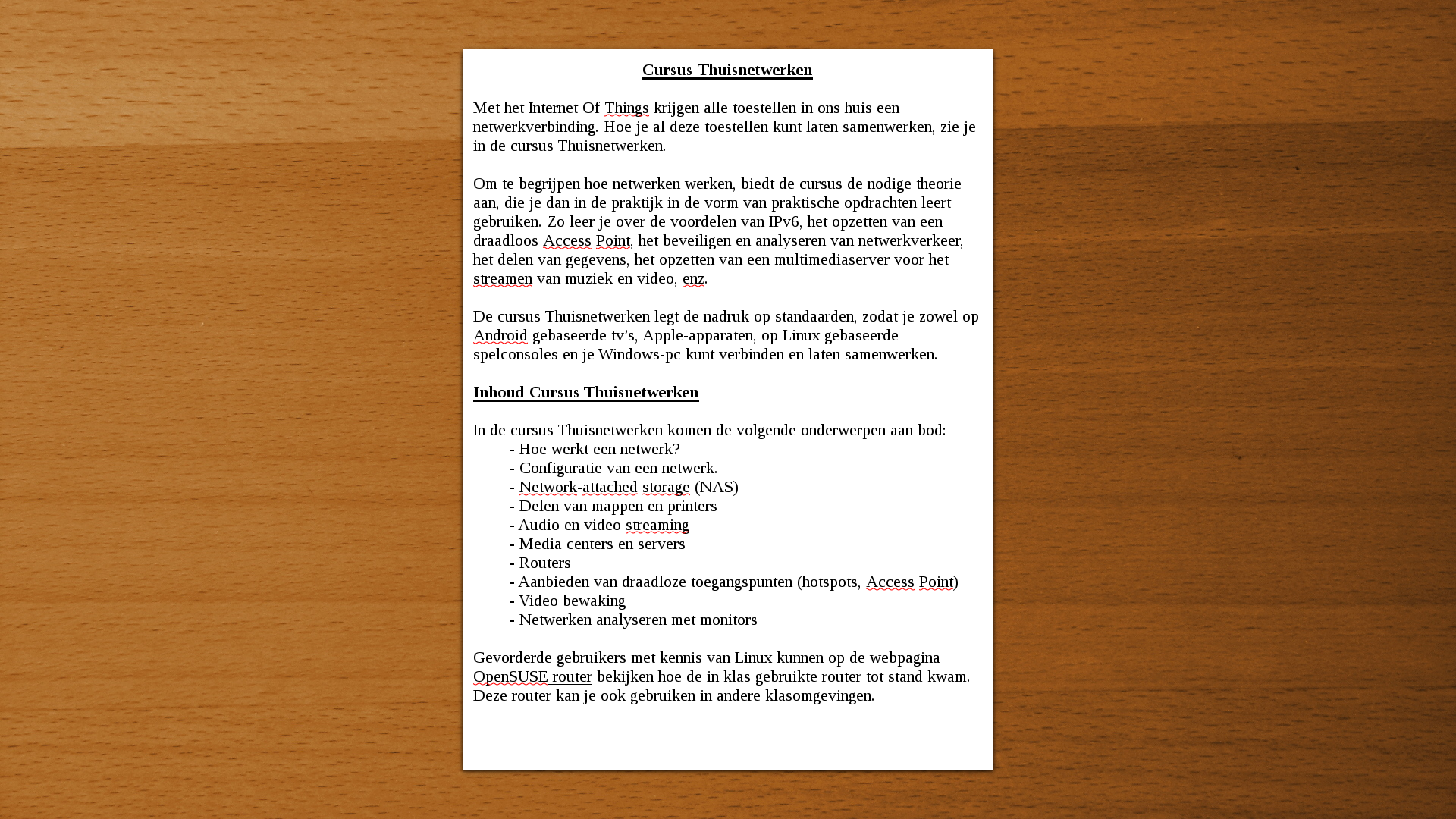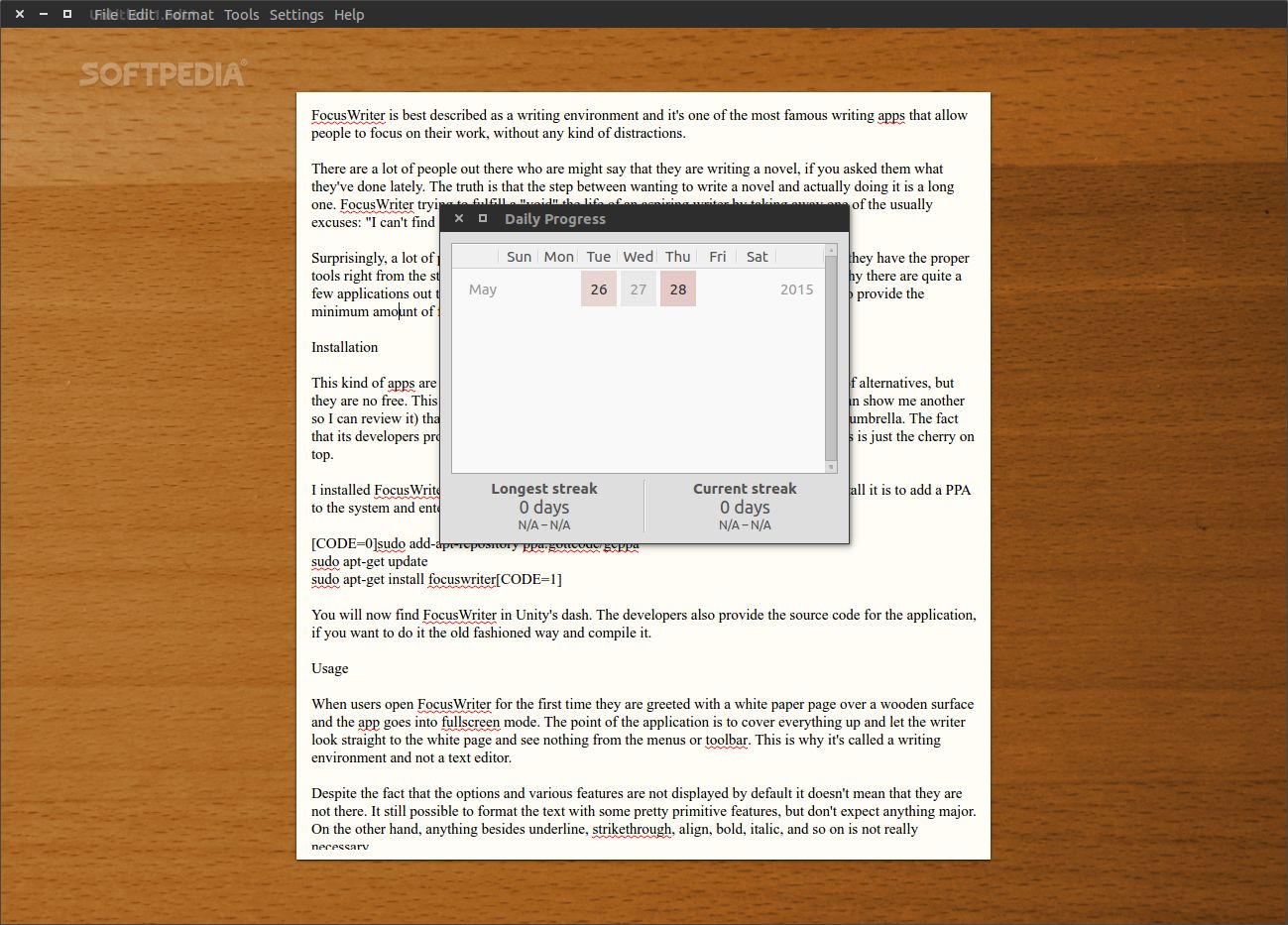
If you wanted to, you could probably easily use this application to write almost anything, including novels and other long and complicated works. If you wish, you can also record your progress so you can see how often you are reaching or exceeding your goals over a longer period of time. Again, this is not visible on the screen unless you hover your cursor over the very bottom of the window, where a tiny little bar will appear and tell you your exact word count and how close you are to achieving your daily goal.
#FOCUSWRITER REVEIW FULL#
And of course, there is also the option to make FocusWriter full screen.įor those of us who like to keep careful track of our progress or who find it helpful to time ourselves as we write, FocusWriter also includes features for setting yourself daily word count or minutes-spent-writing goals. Personally, I have not found much use for this feature but I suppose I can see why it might help you to focus on a particularly troublesome few sentences, especially if you decide to edit your work with FocusWriter. There is also an option to grey out all text save the sentence, sentences or paragraph you are working on. There is a traditional toolbar and a selection of menus at the top of the screen which includes all the basic features you would expect from a word processor however, this is all invisible except when you hover the cursor over it, thus giving you easy access to all the basic features without getting in the way while you are trying to write. You can also create, save and export your own themes using (or not, if you prefer) images from your own library. If none of these themes are to your liking, you can customise them by changing the font margins line-spacing text background colour and opacity and much more besides. Others include background images and coloured pages for your text to appear on (as you can see from the screenshots below).

Some, such as the ‘old school’ theme are very plain featuring nothing but plain text on a plain background.
#FOCUSWRITER REVEIW DOWNLOAD#
When you first download the app (for free, I might add, though you can give a “tip”), you will find it is already preloaded with a selection of themes. You can make the interface as pretty or as sterile as you see fit.
#FOCUSWRITER REVEIW FREE#
What sets apart FocusWriter from these, however, is how highly customisable that environment is and how many features of a typical word processor are still available without being intrusive. Personally, I sometimes find that even the best distraction free interfaces can be a little too sterile when it’s just you and the blinking cursor on a blank screen, daring you to write a word. In fact, even the other apps I mentioned at the start of this post boast distraction free modes which hide most or all of the toolbars to allow you to focus exclusively on your words. There are, of course, plenty of “distraction free writing environments” out there. For instance, I use Scrivener to write my novel and other large projects Hemingway Editor for times of editing Jotterpad to scribble notes and song lyrics on the go (you didn’t know I wrote music too, did you?) and FocusWriterfor short and flash fiction, which is the subject for today’s little review. For me as a writer, that means I have lots of different writing tools depending on the kind of writing I’m doing and what stage of the writing process I’m at.

There’s an old saying I tend to adhere to: you need to use the right tool for the right job.


 0 kommentar(er)
0 kommentar(er)
